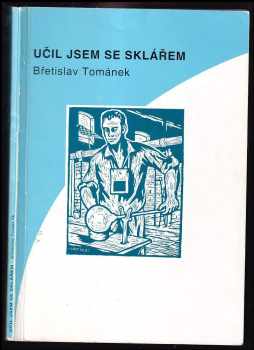The Czech Glass Society has recently published
- Tavení skla – Price 500,- CZK (Melting of Glass) only in Czech language
- Historie sklářské výroby v českých zemích. Part 1 – Price 420,- CZK (History of Glass Production in the Czech Lands. Part 1) only in Czech language
- Historie sklářské výroby v českých zemích. Part 2/1 – Price 230,- CZK (History of Glass Production in the Czech Lands. Part 2/1) only in Czech language
- Historie sklářské výroby v českých zemích. Part 2/2 – Price 300,- CZK (History of Glass Production in the Czech Lands. Part 2/2) only in Czech language
- Učil jsem se sklářem – Price 50,- CZK (I Was Apprenticed to a Glassblower) only in Czech language
- Sklářské názvosloví aneb Co je co ve sklářství (Glass Nomenclature or What's What in Glassmaking) mostly in Czech language (SOLD OUT)
Books can be ordered here: Česká sklářská společnost, Arbesova 66a, 466 04 Jablonec nad Nisou, Czech Republic, e-mail: secretary@czech-glass-society.cz
TAVENÍ SKLA
Smrček, Antonín (ed.), Tavení skla, Czech Glass Society 2008, 696 pages, ISBN 978-80-904044-0-3.
Melting of Glass. The book was written by a team of 16 authors under the direction of Ing. Antonín Smrček, published by the Czech Glass Society in 2008. It contains 696 pages, 414 images, 104 tables and 1045 literary references. Melting is the most basic and expensive process in glass production, which is why the Czech Glass Society has devoted great effort to publishing this monograph. The aim was to publish a book describing glass melting according to the latest scientific knowledge, as well as best practice and proven experience. The book is written at an engineering level for practice.
HISTORIE SKLÁŘSKÉ VÝROBY V ČESKÝCH ZEMÍCH



Drahotová, Olga (ed.), Historie sklářské výroby v českých zemích. Part 1. Od počátků do konce 19. století, Czech Glass Society and Academia, Prague 2005, 759 pages, ISBN 80-200-1287-7.
Kirsch, Roland (ed.), Historie sklářské výroby v českých zemích. Part 2/1. Od konce 19. století do devadesátých let 20. století, Czech Glass Society and Academia, Prague 2003, 483 pages, ISBN 80-200-1069-6.
Kirsch, Roland (ed.), Historie sklářské výroby v českých zemích. Part 2./2. Od konce 19. století do devadesátých let 20. století, Czech Glass Society and Academia, Prague 2003, 569 pages, ISBN 80-200-1104-8.
History of Glass Production in the Czech Lands. Dozens of experts from the ranks of archaeologists, historians, art historians and glass production technologists contributed to the creation of this extensive three-volume publication (1 811 pages). In addition to art glass (which is the main focus of most of the books published so far), the authors have elaborated in detail the whole wide range of glass production – i.e. the production of utility, industrial and technical glass, jewellery, chandeliers and lighting fixtures. The book also covers the development of vocational education and the publication of glass literature. The context of the various historical periods is also traced in relation to political and demographic developments, the development of technical research, industry and trade, etc. The first volume deals with the development of glassmaking from prehistoric times to the mid-19th century, while the second volume (in two parts) covers the period from the mid-19th century to the turn of the millennium.
UČIL JSEM SE SKLÁŘEM

Tománek, Břetislav, Učil jsem se sklářem, Czech Glass Society 2004, 101 pages, ISBN 80-239-6923-4.
I Was Apprenticed to a Glassblower. Memories of the author of the book Břetislav Tománek, a native of Nový Bor, about his apprenticeship years in the 1930s.
GLASS NOMENCLATURE
Hais, Rudolf (ed.), Sklářské názvosloví aneb Co je co ve sklářství, Czech Glass Society 2010, 126 stran, ISBN 978-80-904044-2-7.
(SOLD OUT)
Glass Nomenclature or What's What in Glassmaking is a detailed encyclopedic guide explaining specialist glass terms. It has been compiled by a team of authors under the guidance of the experienced glass technologist Rudolf Hais. Each term is given its interpretation, etymology, German, English and French equivalents, as well as the slang terms used. The book is divided according to production fields. The text is supplemented by a chapter on the history of Czech glass nomenclature.
